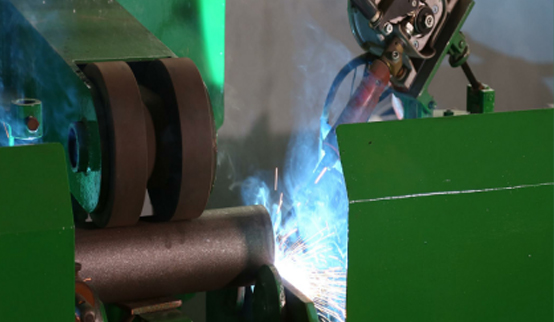 Afrikaans
Afrikaans  Albanian
Albanian  Amharic
Amharic  Arabic
Arabic  Armenian
Armenian  Azerbaijani
Azerbaijani  Basque
Basque  Belarusian
Belarusian  Bengali
Bengali  Bosnian
Bosnian  Bulgarian
Bulgarian  Catalan
Catalan  Cebuano
Cebuano  Corsican
Corsican  Croatian
Croatian  Czech
Czech  Danish
Danish  Dutch
Dutch  English
English  Esperanto
Esperanto  Estonian
Estonian  Finnish
Finnish  French
French  Frisian
Frisian  Galician
Galician  Georgian
Georgian  German
German  Greek
Greek  Gujarati
Gujarati  Haitian Creole
Haitian Creole  hausa
hausa  hawaiian
hawaiian  Hebrew
Hebrew  Hindi
Hindi  Miao
Miao  Hungarian
Hungarian  Icelandic
Icelandic  igbo
igbo  Indonesian
Indonesian  irish
irish  Italian
Italian  Japanese
Japanese  Javanese
Javanese  Kannada
Kannada  kazakh
kazakh  Khmer
Khmer  Rwandese
Rwandese  Korean
Korean  Kurdish
Kurdish  Kyrgyz
Kyrgyz  Lao
Lao  Latin
Latin  Latvian
Latvian  Lithuanian
Lithuanian  Luxembourgish
Luxembourgish  Macedonian
Macedonian  Malgashi
Malgashi  Malay
Malay  Malayalam
Malayalam  Maltese
Maltese  Maori
Maori  Marathi
Marathi  Mongolian
Mongolian  Myanmar
Myanmar  Nepali
Nepali  Norwegian
Norwegian  Norwegian
Norwegian  Occitan
Occitan  Pashto
Pashto  Persian
Persian  Polish
Polish  Portuguese
Portuguese  Punjabi
Punjabi  Romanian
Romanian  Russian
Russian  Samoan
Samoan  Scottish Gaelic
Scottish Gaelic  Serbian
Serbian  Sesotho
Sesotho  Shona
Shona  Sindhi
Sindhi  Sinhala
Sinhala  Slovak
Slovak  Slovenian
Slovenian  Somali
Somali  Spanish
Spanish  Sundanese
Sundanese  Swahili
Swahili  Swedish
Swedish  Tagalog
Tagalog  Tajik
Tajik  Tamil
Tamil  Tatar
Tatar  Telugu
Telugu  Thai
Thai  Turkish
Turkish  Turkmen
Turkmen  Ukrainian
Ukrainian  Urdu
Urdu  Uighur
Uighur  Uzbek
Uzbek  Vietnamese
Vietnamese  Welsh
Welsh  Bantu
Bantu  Yiddish
Yiddish  Yoruba
Yoruba  Zulu
Zulu Understanding Conveyor Head Roller Functions and Applications in Material Handling Systems
Understanding Conveyor Head Rollers Their Importance and Functionality
Conveyor systems are a critical component in various industries, streamlining the movement of goods and materials. Among the essential components of these systems, conveyor head rollers play a vital role in ensuring the efficient functioning of the entire conveyor setup. This article delves into the significance, structure, and operational mechanisms of conveyor head rollers.
What Are Conveyor Head Rollers?
Conveyor head rollers, often referred to as drive rollers, are positioned at the end of a conveyor belt system. Their primary function is to provide the driving force to the conveyor belt, facilitating the movement of materials from one point to another. Typically, these rollers are powered by a motor that rotates the roller, thereby advancing the belt attached to it.
The Structure of Head Rollers
A typical conveyor head roller consists of a cylindrical body, usually made from durable materials like steel or aluminum to withstand the weight and friction generated during operation
. They are often coated with rubber or other materials to enhance grip, minimize slippage, and reduce noise during operation. Moreover, various designs exist, such as crowned or flat rollers, serving different operational needs based on the type of materials being transported and the specific layout of the conveyor system.Operational Mechanics
conveyor head roller

The operation of conveyor head rollers is relatively straightforward but essential for the overall efficacy of a conveyor system. The motor, usually located at the head or tail of the conveyor, is connected to the roller through a series of belts or gears, allowing for torque transmission. As the roller turns, it pulls the conveyor belt along, enabling the smooth transition of materials from one end of the conveyor to the other.
Additionally, head rollers have built-in features to combat issues such as misalignment and wear. Many modern designs include bearings that allow for smooth rotation and reduce friction, ultimately prolonging the lifespan of the roller and the belt.
Importance in Industrial Applications
The importance of conveyor head rollers cannot be overstated. In manufacturing, warehousing, and distribution, they not only enhance operational efficiency but also reduce labor costs associated with manual handling. Fast and reliable material transport ensures that production lines operate smoothly, leading to increased productivity.
Moreover, the durability and reliability of head rollers contribute to minimizing downtime caused by equipment failure. Regular maintenance and timely replacement of worn rollers can prevent unexpected breakdowns, ensuring a consistent workflow and optimizing the supply chain.
Conclusion
In summary, conveyor head rollers are indispensable components of conveyor systems that drive efficiency in various industrial applications. Their robust construction, operational efficiency, and ability to handle heavy loads make them a crucial element in the seamless transportation of goods. Understanding their functionality and importance can help organizations better maintain their equipment, thereby enhancing overall productivity and profitability. As industries continue to evolve and seek innovative solutions, the role of conveyor head rollers will undoubtedly remain pivotal in supporting these advancements.
-
Revolutionizing Conveyor Reliability with Advanced Rubber Lagging PulleysNewsJul.22,2025
-
Powering Precision and Durability with Expert Manufacturers of Conveyor ComponentsNewsJul.22,2025
-
Optimizing Conveyor Systems with Advanced Conveyor AccessoriesNewsJul.22,2025
-
Maximize Conveyor Efficiency with Quality Conveyor Idler PulleysNewsJul.22,2025
-
Future-Proof Your Conveyor System with High-Performance Polyurethane RollerNewsJul.22,2025
-
Driving Efficiency Forward with Quality Idlers and RollersNewsJul.22,2025





























